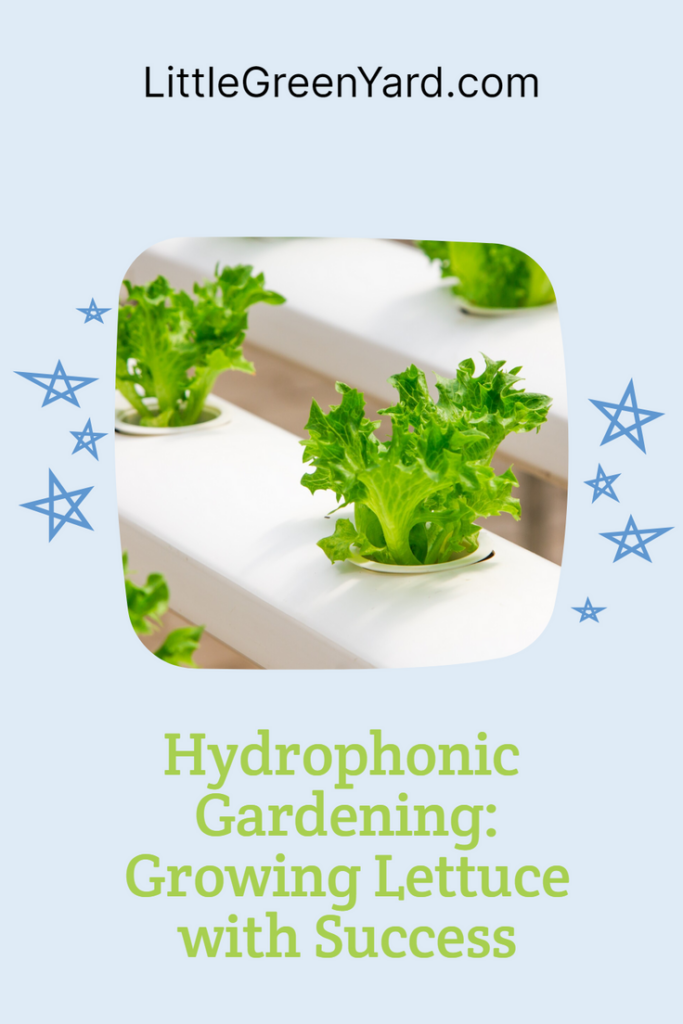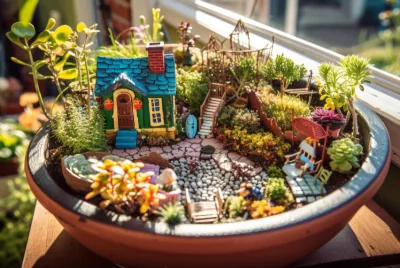Hydroponic: Growing Lettuce with Success
Deprecated: The PSR-0 `Requests_...` class names in the Requests library are deprecated. Switch to the PSR-4 `WpOrg\Requests\...` class names at your earliest convenience. in /home/littlegr/public_html/wp-includes/class-requests.php on line 24
Hydroponic has revolutionized the way we grow plants, offering an efficient and sustainable alternative to traditional soil-based cultivation methods. As an avid enthusiast and advisor in the world of hydroponics, I am excited to share my knowledge on how to successfully grow an abundance of lettuce using this innovative technique. In this article, we will explore the benefits of hydroponic, discuss the essential role of potting mix, address common errors beginners face, and provide helpful suggestions for a flourishing hydroponic lettuce garden.
Benefits of Hydroponic
Hydroponics offers several benefits compared to traditional soil-based gardening, making it an increasingly popular method for growing plants, especially in controlled environments such as greenhouses. Some of the key benefits of hydroponics include:
- Water Efficiency: Hydroponic systems use significantly less water compared to traditional soil-based gardening because water is recirculated within the system, minimizing wastage due to runoff and evaporation.
- Nutrient Control: In hydroponics, nutrients are directly supplied to the plants’ roots in a dissolved form, allowing for precise control over the nutrient composition and concentration. This ensures that plants receive optimal nutrition, leading to faster growth and higher yields.
- Space Efficiency: Hydroponic systems can be designed to maximize vertical space utilization, making them ideal for urban environments and areas with limited land availability. Additionally, plants grown hydroponically typically have smaller root systems, allowing for higher plant densities per unit area.
- Faster Growth Rates: With access to a constant supply of water, nutrients, and oxygen, plants grown hydroponically tend to grow faster than those grown in soil. This accelerated growth rate can result in earlier harvests and increased overall productivity.
- Reduced Pest and Disease Risks: You can setup your hydroponic systems indoors or in controlled environments. This minimizes exposure to pests and diseases that are commonly found in soil. This reduces the need for chemical pesticides and fungicides, making hydroponic produce potentially safer and healthier.
- Year-Round Production: By controlling environmental factors such as temperature, humidity, and lighting, hydroponic systems enable year-round cultivation of crops regardless of external weather conditions. This allows for continuous harvests and consistent supply to markets.
- Environmental Sustainability: Hydroponics can be more environmentally friendly than traditional agriculture practices. It reduces the need for soil tilling, which can lead to soil erosion and loss of biodiversity. Moreover, hydroponic systems can be designed to use renewable energy sources and recycled materials, further minimizing their environmental footprint.
- Adaptability: Hydroponic systems can be tailored to suit the specific needs of different plant species, growth stages, and environmental conditions. This flexibility allows growers to experiment with various techniques and optimize their setups for maximum efficiency and productivity.
Getting Started with Hydroponic
Choosing the Right Setup
To embark on your hydroponic lettuce-growing journey, it is crucial to select the appropriate setup for your needs and available space. There are various types of hydroponic systems, including nutrient film technique (NFT), deep water culture (DWC), and ebb and flow systems. We will not go into details regarding the different hydroponic systems available in the market. Each has its own advantages and considerations, so research and choose the system that suits your needs, space, and budget.
Next, decide what crops you want to grow and understand their specific requirements regarding nutrients, pH levels, and environmental conditions. Plan your setup, including the location, size, and layout of your hydroponic system. Consider factors such as available space, access to water and electricity, and lighting requirements.
Setting Up the Hydroponic System
Once you have chosen your preferred hydroponic system, it’s time to set it up. Purchase or gather the necessary equipment and supplies for your chosen hydroponic system, including containers or trays, growing medium, nutrient solution, pumps, tubing, and lighting (if growing indoors). Ensure that all equipment is clean and in good working condition before setting up your hydroponic system.
Follow the manufacturer’s instructions carefully to assemble the system correctly. Pay attention to details such as ensuring proper water circulation, adequate aeration, and appropriate spacing between plants. Fill the reservoir with water and prepare the nutrient solution according to the instructions provided with your chosen nutrient formula. By setting up your hydroponic system correctly, you will create an optimal growing environment for your plants.
Selecting Lettuce Varieties for Hydroponics
Lettuce is an excellent crop for hydroponic cultivation due to its relatively quick growth cycle and shallow root system. Here are some popular lettuce varieties that you can try out in your hydroponic systems:
- Butterhead Lettuce:
- Varieties such as Bibb and Boston have loose heads with tender leaves and a buttery texture. They are good for hydroponic cultivation because they are relatively compact and have excellent flavor.
- Romaine Lettuce:
- Romaine lettuce, also known as cos lettuce, forms tall, upright heads with crisp leaves and a slightly bitter flavor. Varieties like ‘Parris Island’ and ‘Little Gem’ are popular choices for hydroponic production.
- Leaf Lettuce:
- Leaf lettuce varieties, including Red Leaf, Green Leaf, and Oak Leaf, produce loose bunches of colorful and flavorful leaves. They grow quickly and can be harvested at various stages of maturity, making them ideal for continuous harvesting in hydroponic systems.
- Summer Crisp Lettuce:
- Also known as Batavian lettuce, Summer Crisp varieties like ‘Muir’ and ‘Sierra’ have a combination of crispness and tenderness, making them suitable for hydroponic cultivation. They offer good resistance to bolting and are adapt well to fluctuating temperatures.
- Baby Lettuce Mixes:
- Many seed companies offer pre-mixed blends of lettuce varieties specifically for baby leaf production. These mixes typically include a diverse range of colors, textures, and flavors, providing a visually appealing and nutritious addition to salads.
When selecting lettuce varieties for hydroponics, consider factors such as growth characteristics, flavor preferences, and environmental adaptability. It’s also essential to choose varieties that are disease-resistant and well-suited to the specific conditions of your hydroponic setup. Experimenting with different varieties can help you find the ones that perform best in your system and meet your production goals.
Importance of Growing Medium in Hydroponic
In hydroponics, instead of using traditional potting mixes or soil, plants are direct growing in nutrient-rich water solutions or inert growing mediums that provide support to the roots while allowing for easy access to water, oxygen, and nutrients. Here are some common options for growing mediums used in hydroponics:
- Rockwool:
- Rockwool cubes or slabs are made from spun volcanic rock fibers and they are a popular choice for hydroponic cultivation. They provide excellent support for plant roots, retain moisture well, and are easily customized to fit different hydroponic systems.
- Expanded Clay Pellets (Hydroton):
- Expanded clay pellets are lightweight, porous, and inert, making them an ideal medium for hydroponic systems. They provide good aeration and drainage while offering stability for plant roots.
- Coco Coir:
- Coco coir, made from the husks of coconuts, is a renewable and environmentally friendly growing medium. It has excellent water retention capabilities and provides aeration to the roots. Coco coir comes in various forms, including blocks, chips, and fibers, and is suitable for hydroponic systems.
- Perlite and Vermiculite:
- Perlite and vermiculite are lightweight, sterile, and inert materials often used as soil amendments. In hydroponics, they are used alone or mixed with other mediums to improve drainage and aeration.
- Nutrient Film Technique (NFT) Channels:
- In NFT hydroponic systems, plants are grown in channels or gullies through which a thin film of nutrient solution continuously flows. The plants’ roots are suspended in the nutrient solution, allowing for direct uptake of water and nutrients without the need for a solid growing medium.
- Aeroponic Systems:
- In aeroponic systems, plant roots are suspended in the air, and a fine mist of nutrient solution is sprayed onto the roots at regular intervals. No growing medium is used in aeroponic systems, allowing for maximum oxygenation and nutrient uptake.
Experimentation may be necessary to determine which medium works best for your specific setup and plant species. Additionally, ensure that any medium you use is clean, sterile, and free from contaminants to prevent potential issues with plant health and disease.
Common Errors in Hydroponic
Despite its many benefits, hydroponic can be challenging, especially for beginners. Let’s explore some common errors and pitfalls you may encounter and learn how to overcome them.
Overwatering or Underwatering
Maintaining the right balance of moisture is crucial in hydroponic systems. Overwatering can suffocate the roots and lead to root rot, while underwatering can deprive the plants of essential nutrients. Regularly monitor the moisture levels and adjust watering accordingly. A moisture meter can be a valuable tool in ensuring the optimal hydration of your lettuce plants.
Poor pH and Nutrient Balance
Maintaining the correct pH and nutrient balance is vital for healthy plant growth. Measure the pH of your nutrient solution regularly using a pH meter and adjust it to the appropriate range for lettuce (around 5.5 to 6.5). Additionally, closely monitor the nutrient levels and ensure they are within the recommended range for lettuce cultivation. Regularly test and adjust the nutrient solution to provide the necessary elements for robust growth.
Inadequate Lighting
Proper lighting is essential for photosynthesis and healthy plant development. Insufficient light can result in stunted growth and weak lettuce plants. Invest in high-quality LED grow lights that provide the optimal spectrum and intensity for lettuce cultivation. Position the lights at the appropriate distance from the plants to ensure adequate coverage and avoid burning the leaves.
Suggestions for Successful Hydroponic Lettuce Growing
To ensure successful hydroponic lettuce growing, consider implementing the following suggestions:
Maintaining Proper pH and Nutrient Levels
Regularly monitor and adjust the pH and nutrient levels in your hydroponic system. A balanced and well-maintained nutrient solution will promote healthy growth and maximize the yield of your lettuce plants.
Providing Sufficient Lighting
Invest in high-quality LED grow lights that emit the correct spectrum and intensity for lettuce growth. Adequate lighting will enable photosynthesis and contribute to strong, vibrant lettuce leaves.
Monitoring Watering and Drainage
Pay close attention to the moisture levels in your hydroponic system. Avoid overwatering or underwatering by regularly checking the moisture content and adjusting watering accordingly. Ensure proper drainage to prevent waterlogging and root-related issues.
Regularly Checking and Adjusting the System
Regularly inspect your hydroponic system for any signs of malfunction or deficiencies. Check for clogged pipes, damaged pumps, or nutrient imbalances. Promptly address any issues to maintain a healthy and thriving lettuce garden.
Last words
In conclusion, hydroponic gardening offers a fascinating and efficient way to grow lettuce with remarkable results. It has even been used by children to learn about growing your own food! By following the right setup, understanding the importance of potting mix, and avoiding common errors, you can achieve bountiful harvests of fresh, nutrient-rich lettuce throughout the year. Remember to monitor pH and nutrient levels, provide sufficient lighting, and maintain proper watering and drainage. Embrace the possibilities of hydroponic gardening and embark on a journey of sustainable and rewarding lettuce cultivation. “Last but not the least, you get to enjoy your fresh homegrown lettuce in all possible ways, be it as a salad, in burgers or even as a wrap. Check out this post by Annemarie where she shares some simple tips on lettuce growing and cooking!

FAQs (Frequently Asked Questions)
- Can I grow other vegetables besides lettuce using hydroponics? Yes, hydroponic gardening is versatile and suitable for growing various vegetables and herbs. You can experiment with tomatoes, cucumbers, herbs, and more.
- How often should I check and adjust the pH of the nutrient solution? It is recommended to check the pH of the nutrient solution at least once a day and adjust it as needed. pH fluctuations can occur due to plant uptake and nutrient solution evaporation.
- Can I reuse the potting mix in hydroponic systems? Yes, you can reuse the potting mix in hydroponic systems after sterilizing it to eliminate any potential pathogens. However, it is essential to replenish the nutrients in the mix before reuse.
- What are the advantages of hydroponic gardening over traditional soil-based gardening? Hydroponic gardening offers benefits such as year-round cultivation, space and water efficiency, disease and pest control, and faster growth rates.
- Can I grow lettuce hydroponically indoors? Absolutely! One of the advantages of hydroponic gardening is its suitability for indoor cultivation. With the right setup and lighting, you can grow lettuce hydroponically in your home or apartment.




